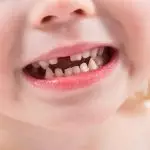
How Important is Physiotherapy For Juvenile Idiopathic Arthritis? by Dr. Sagar Bhattad
11 min readWritten by Sindhuja Prabhu


Arthritis is a word we associate with old age. When someone says they are diagnosed with arthritis, we invariably assume they must be old. But did you know that a child can often suffer from arthritis too? In certain cases, the pain can get so bad that your child is unable to carry out their day-to-day activities and be a regular child. Juvenile Idiopathic Arthritis is a condition affecting children. While the treatment options are limited, physiotherapy is being increasingly considered a good option for symptom relief. So how important is physiotherapy for juvenile idiopathic arthritis?
Juvenile arthritis is a serious condition that is more prevalent than a common man is aware of. Several children suffer from Juvenile Idiopathic Arthritis. If you know any kid with this condition, this article is for you. We explain the different types of this condition, its causes, symptoms and how physiotherapy can help with the condition.
In This Article
- What is Juvenile Idiopathic Arthritis?
- How Important is Physiotherapy For Treating Juvenile Idiopathic Arthiritis?
- Benefits of Physiotherapy For JIA
- What Physiotherapy Will be Used With Juvenile Idiopathic Arthritis?
- Types of Juvenile Idiopathic Arthritis
- Symptoms of Juvenile Idiopathic Arthritis
- Diagnosis of Juvenile Idiopathic Arthiritis
- Can You Prevent Juvenile Idiopathic Arthritis?
- Precautions to Consider When Getting Physiotherapy For Your Child
- FAQ’s
What is Juvenile Idiopathic Arthritis?
Juvenile Idiopathic Arthritis (JIA) is an autoimmune disease. It is not just a single disease but a group of chronic disorders causing inflammations in the joints of children below the age of 16. The exact reason for this condition is still unknown. It could be due to environmental factors, certain infections, or even genetics.
An autoimmune disease is a condition where the root cause is unknown. The immune system starts attacking the body instead of protecting it. This happens when the immune system mistakes the healthy cells of the body to be foreign invaders and starts producing antibodies to attack them. So, as a result, the immune system produces antibodies to attack the body instead of protecting it.
As of today, there is no clear understanding of why or how JIA occurs in such young children. As a result, there is no permanent cure either. However, with continuous research, doctors have narrowed down the symptoms and have come up with treatments to keep these symptoms under control, one of them being physiotherapy.
How Important is Physiotherapy For Treating Juvenile Idiopathic Arthiritis?

For kids suffering from JIA, the significance of physiotherapy for symptom relief cannot be underestimated. Physiotherapy is a non-invasive treatment that aims to help with various physical limitations in the body. It helps strengthen the muscles and limbs affected by any disease.
In the case of Juvenile Idiopathic Arthritis, or any form of arthritis, physiotherapy is the perfect way to start treating the disease. This treatment will strengthen the muscles around the affected joints to offer more support. When the muscles surrounding the affected joint are strengthened, it takes off the pressure on the joint.
With a disease like JIA where there is no permanent cure and the chances of the disease spreading are high, the entire body has to be taken care of. As all joints and limbs of the body are exercised and pushed to their limits, they get stronger. This can reduce the impact of arthritis on other parts of the body in the future as well. In this way, physiotherapy can be extremely effective for a child suffering from the condition.
Benefits of Physiotherapy For JIA
Physiotherapy provides the following benefits for a child suffering from JBenefits-of-Physiotherapy-For-JIA
- Reduces swelling
- Reduces pain
- Strengthens muscles surrounding the joint
- Reduces fatigue
- Improves range of motion in the affected joint
- Aids in leading a more active lifestyle
If the knee joint is affected, the physiotherapist will give exercises to strengthen the shin and thigh muscles that surround the knee. When the patient wants to use their knee, the strong muscles surrounding the knee will take the major load of physical exertion and reduce the pressure on the joint.
Over time the therapy will also strengthen the affected joint and increase the fluidity of the joint. When the joint is in continuous use and motion, the swelling and stiffness will reduce drastically and also strengthen it. This in turn will enable you to use that particular joint, better with time. The therapist will not focus just on the affected joint or the limb, they will focus on other joints that can be impacted too.
Going with the knee joint example, it is not enough to just strengthen the knee joint or the thigh muscle. When the knee is weak, the pressure is more on the ankle to carry the weight of the person. So, this joint could be affected too (more strain, wrong posture). The therapist will work on the ankle to ensure it is strong enough to take the weight and strain of the person with a knee problem. If the ankle is already affected, they will give exercises to relieve that pain too.
What Physiotherapy Will be Used With Juvenile Idiopathic Arthritis?
Physiotherapy will include a number of exercises targeting the affected area as well as surrounding parts of the body. The therapist will come up with various combinations of exercises and keep changing them as you progress with the treatment. If they start with improving the range of motion in a particular joint, after a while they will move on to strengthening it. At the same time, they will also focus on surrounding muscle groups.
The physiotherapist will change the exercises as the symptoms change. If more symptoms are seen in other areas, the focus will be shifted there. We now list some of the exercises that a physiotherapist will most commonly use with a child with JIA.
Types of Physiotherapy Exercises Used With JIA

Some of the exercises that a physiotherapist will use to help with JIA are
1. Exercises to Improve Range of Movement
These are basic exercises that focus on improving the stiffness in the joints and increasing the range of movement in them.
2. Strengthening Exercises
These exercises will start slow and get tougher as your body copes with the exercises. These exercises will help strengthen the joints as well as the muscles around them.
3. Hydrotherapy
This type of therapy is given in water to reduce the pressure on joints. Water offers buoyancy which is a great help for people suffering from joint aches. When you exercise in water, the movements are easier and the load on the joints reduces to a great extent. It also helps in improving your balance in case JIA has impacted your lower joints.
4. Cryotherapy
Cryotherapy uses liquid nitrogen or argon gas in extremely cold temperatures to heal injuries to joints. The extremely cold temperature helps freeze and remove the abnormal tissue that may be causing stiffness and pain in joints.
5. Wax Therapy

Hot wax is applied to joints to reduce inflammation caused by water retention. The hot wax is applied to swollen joints and let to sit for a while. The heat absorbs the fluid inside, thereby reducing the swelling and stiffness. Heat also helps in improving the range of motion and reduces pain.
6. Cardiovascular Activities
These exercises help improve heart functioning. When your physical activities are limited by joint aches, the heart loses its capacity to handle strenuous activities. Cardio exercises will help improve this slowly.
7. Pacing Advice
This helps you get back to your physical activities in a more controlled manner so that you don’t over-exert yourself in the beginning and struggle towards the end. This helps you “pace” your activities so that you can achieve your target or goals.
8. TENS Treatment
This treatment method uses a mild current to reduce the pain. Small electrical impulses are delivered to the affected area so that they reduce the pain signal going to the spinal cord and brain. This effectively reduces the pain you experience.
9. Exercise Programs at Home
Exercises you can and need to do at home, in your home. These can be in addition to various other therapies you are undergoing in the clinic under professional guidance too. They can include small exercises to help relieve pain immediately, as you cannot rush to your therapist every time it hurts.
Hydrotherapy, cryotherapy, and wax therapy have to be done only in the specialized clinic under medical supervision. These are short-term treatments to reduce swelling and inflammations immediately. Once the swelling is under control, the therapist will move on to exercises.
Similarly, once they teach you various exercises and are convinced you can do them on your own, they will let you do them at home. You need to do them religiously as advised. JIA is here to stay and if you want to keep the symptoms under control and not let them affect your day-to-day life, then you need to continue your exercises.
You can do them at home, go to the gym or do them as a part of your other fitness routines. You need to ensure you follow the advice given by your therapist and do not over-exert yourself. Regular checking by your therapist can help you ascertain if your joints are getting better or if you need more assistance.
Types of Juvenile Idiopathic Arthritis
JIA can be categorized into five major types.
1. Oligoarthritis

This is the most common type of JIA which affects lesser than five joints in the body. The impact is seen within the first 6 months of infection. It will mostly affect the knees, wrist, and ankles. In some cases, it can also affect the eye, particularly the iris – known as iritis or iridocyclitis. It is more prevalent among girls than in boys. Most children will outgrow this type of JIA when they reach adulthood.
2. Systemic Arthritis

It first appears as just a fever and some mild rashes, but the symptoms will get severe. The impact is not just on the joints. The swelling can affect the spleen and lymph nodes too. If left unattended, the swelling in the joints can cause them to become stiff and very painful.
3. Polyarthritis

Also known as pJIA, affects 5 or more joints within the first 6 months of the infection itself. It is more common among girls than boys. A viral infection can also be its trigger. In some cases, it can present itself as acute episodes while in some cases it can be a chronic condition that can last for months. When it affects a joint, it affects the same joint on both sides of the body, both the knees, both the elbows, both ankles, both wrists, etc. It can also affect the joints in the neck and jaw.
4. Psoriatic Arthritis

Psoriasis is a skin disease that causes severe itching and scaly patches in the elbows, trunk, knees, and scalp. Psoriatic arthritis can affect children with psoriasis. Even if the psoriasis is mild, the arthritis swelling in the joints can be severe and painful. Either arthritis or psoriasis will affect the child first. The other part of the disease may even take years to affect them (usually psoriasis occurs first). Treatment can include steroids to help with inflammation. If the impact is severe, the child might even need joint replacement surgery at a later stage.
[Read : Steroids in Children]
5. Enthesitis-Related Arthritis

This form of JIA predominantly affects the lower part of the body. It can affect the spine, hips, enthuses, and can eventually even affect the sacroiliac joints and the spine. It can result in juvenile ankylosing spondylitis. This condition is more common among boys above the age of eight than girls. Children with a male relative diagnosed with ankylosing spondylitis are at a higher risk of contracting this form of JIA. Some studies also show children of Asian ethnicities are at a higher risk.
Symptoms of Juvenile Idiopathic Arthritis

Different forms of arthritis can present different symptoms. However, some common symptoms seen in children that can tip off a parent that there is an issue to look into are:
- Pain in the joints
- Stiffness
- Swelling in one or multiple joints
- Inability to carry out regular physical activities or play sports
- Heat around the affected joints
- Fatigue
- Fever
Diagnosis of Juvenile Idiopathic Arthiritis
Since different types of arthritis affect different parts of the body as we mentioned earlier, these symptoms can vary from child to child. It is easy to confuse these joint pains with regular pains a child experiences due to rough play or over-exertion.
When a parent suspects that there is more to the joint pains and swelling, they can inform the doctor and give a detailed history of the aches and pains. The doctor will then conduct a physical exam and ask for a number of tests.
The tests will help rule out other diseases with similar symptoms. Once the doctor is convinced it is indeed JIA, physiotherapy has to be started immediately.
[Read : Joint Pains in Children: Should I Consult a Ped Rheumatologist or an Orthopedician?]
Tests to Diagnose Juvenile Idiopathic Arthiritis

Some of the tests required to diagnose JIA are:
- MRI scans
- Ultrasound
- X-rays
- Blood tests
- Physical examination of each joint
Can You Prevent Juvenile Idiopathic Arthritis?
No, you cannot. Juvenile Idiopathic Arthritis is a condition where the reason for the disease is still unknown. You cannot prevent something you don’t know about. When you cannot determine why disease occurs, there is no way to prevent it completely. You can control the symptoms and even keep them at bay with proper therapy.
Precautions to Consider When Getting Physiotherapy For Your Child
When your child is undergoing physiotherapy for your arthritis, you need to take these precautions.
- Ensure that your child does the exercises as instructed. Even if you feel the pace is too slow for you, follow your therapist’s advice. They have a way to go about these things.
- If your child experiences pain or discomfort, let your therapist know. The “no pain no gain” formula does not work every time. If the joints hurt due to some exercise or therapy, you need to let them know.
- Ensure that your child follows a physically active lifestyle, even after the pain and swelling subside. You don’t want it to get serious again until you take care of the joints.
- Understand the pain triggers. Certain activities, the weather, temperature, etc. can make the joint pains and swelling worse in your child. Understanding these cues can help you reduce painful incidents in the future.
- If you are switching therapists, ensure your new therapist has a clear idea about the disease and the treatment your child underwent.
- It can be very tough mentally. Do not give up and do not let your child give up too. Your child need not live in chronic pain and physiotherapy ensures that.
Juvenile Idiopathic Arthritis can be a very tough condition to live with; especially if the child was very young at the time of diagnosis. For a child to not be able to run around and do things their peers are doing, can be very traumatic to live with, in addition to the pain. However, with therapy, exercise, and proper care, a child can live a good life and enjoy their childhood without any major sacrifices.
FAQ’s
1. Does Exercise Help Juvenile Arthritis?
Yes, it helps to a great extent. Juvenile arthritis causes swelling in the joints, which when left unattended can affect the range of motion. Exercising can keep these joints active and prevent them from getting too tight or stiff. Exercise can help in using the joints almost to their full potential.
2. Does Physiotherapy Help With Arthritis Pain?
Yes, physiotherapy helps in a very big way. It helps to keep the symptoms under control and keep the joints fluid. Continuous physiotherapy can not only keep the pain under control but can also ensure a better quality of life for the child.
3. Can Juvenile Idiopathic Arthritis be Cured?
Unfortunately, no. There is no permanent cure for this condition yet. However, close monitoring, medicines, and physiotherapy, can help control the symptoms. The affected child can lead a good quality of life, almost similar to other unaffected kids. It requires a lot of patience, perseverance, and commitment from the child and family.
Read Also: Finding Ways to Help Kids Exercise

Sindhuja Prabhu,M.Sc (Psychology),PGDBM
Sindhuja, a mother of two, is an obsessive mom with a keen interest in psychology, especially child psychology. Her quest for knowledge and way with words led her to become a passionate content writer. She transformed her love for writing into a full-fledged career which incidentally also turned up being the perfect stress buster for the last 5 years.Read more.
Responses (0)
Want curated content sharply tailored for your exact stage of parenting?
Sponsored content
Discover great local businesses around you for your kids.
Get regular updates, great recommendations and other right stuff at the right time.











